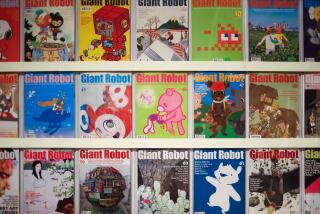STYLE: DESIGN : Imperfect World
- Share via
Appreciating the imperfect, impermanent or incomplete isn’t the way of the West. Yet such qualities, known collectively as wabi-sabi , have been celebrated by the Japanese for centuries . In his new book, “ Wabi-Sabi : For Artists, Designers, Poets & Philosophers” (Stone Bridge Press), writer-architect-photographer Leonard Koren explores the traditional Japanese aesthetic through close-ups of the commonplace. “Things wabi-sabi often appear odd, misshapen, awkward or what many people would consider ugly,” he writes. “They record the sun, wind, rain, heat and cold in a language of discoloration, rust, tarnish, stain, warping, shrinking, shriveling and cracking. Their nicks, chips, bruises, scars, dents, peeling and other forms of attrition are a testament to histories of use and misuse.” Wabi-sabi --a way of looking at the world to challenge the eye of the beholder.
More to Read
Sign up for our Book Club newsletter
Get the latest news, events and more from the Los Angeles Times Book Club, and help us get L.A. reading and talking.
You may occasionally receive promotional content from the Los Angeles Times.







